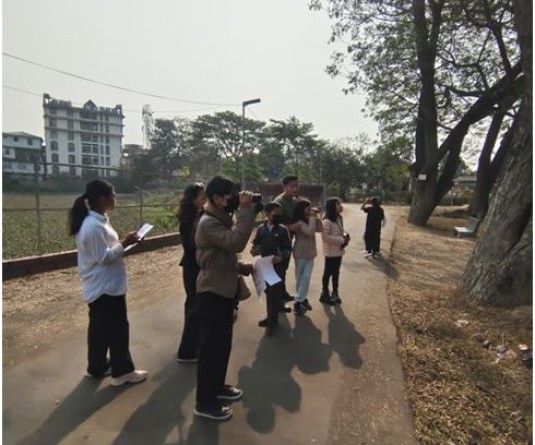
Jubilee Shangrei
Introduction:
The politics of recognition has witnessed a remarkable upsurge, euphemism, and uproar for /to various struggling movements of nationalism. In addition, it has generated much inferno and modicum ray of hope without light of emancipation. The politics of recognition of the nationalist movement, unlike, the politics of multiculturalism (the politics of recognition of multiculturalism is largely located in the foundational framework within a nation-state for a viable logical outworking of the triangle relationship of citizenship, democracy and cultural diversity) is located outside the framework of the modern nation state’s constitutional framework. This has led to Macheavellianization over/of the nationalist movement’s politics of recognition by the colonizing nation-state, and relativizing politics of multiculturalism with that of the nationalist movement’s politics of recognition. This above proposition reflects especially, the Naga nationalist movement in the Northeast India. The Naga nationalist movement one of the oldest nationalist movements in Asia is on a ‘tortoise pace’ on the track of the politics of recognition. Undoubtedly the Naga nationalist movement has been an epitome of nationalist movement in India and South Asia converting concepts like sovereignty and nationalism into platform despite the demeaning and annihilating wave of globalization to such terms like sovereignty, nation-state etc. In what follows, my focus is incarcerated on: (1) the hermeneutical problems vis-à-vis the recognition of ‘the unique history and situation of the Nagas’, and (2) India’s side of salient politics vis-à-vis the recognition, (3) Politics of neo-escapism, and (4) conclusion.
Hermeneutical problems:
Hermeneutics is generally understood as critical interpretation or understanding of texts, and of lately, the same has been extended to socio-economic and political realm. The hermeneutical problems I pose to interrogate do not consign to the epistemological historicity of the substantive issues of ‘the unique history and situation of the Nagas’. But rather the hermeneutical problems that concerned with the epistemological recognition of the said politics of recognition within/in the cease fire process. The GOI has recognized ‘the unique history and situation of the Nagas’ in a Joint Communiqué between the representatives of the government of India and the NSCN, held in Amsterdam on 11 July 2002. This recognition has been considered as an accommodative-understanding, historical- backward looking approaches, and forward looking initiative, to bring a lasting and honorable solution that can be arrived at. The crypto – understanding and explanation of the phrase ‘the unique history and situation of the Nagas’ would mean (for the Nagas)Nagas ‘never’ and non- acceptance of the Indian Constitution and the Indian Union; that is to say, the Nagas were independent sovereign people. Thus, the logical understanding and outworking of these features would entail and consign to a unique solution. Despite this crypto-understanding, the Joint Communiqué between the GOI and the NSCN does not define or explain ‘the what’ of ‘the unique history and situation of the Nagas’. This has or might open up a knotty hermeneutical puzzle or hermeneutical skepticism because the affidavit and the ideal of authenticity of recognition can best be sealed by definition and explanation. The notion of authenticity is not merely an assurance of apodictic calculated consequences but also carries a consignment of moral recognition, that recognition is not just a courtesy we owe to people or entity. But instead it is a vital human need. That is to say non-recognition or misrecognition can inflict harm, can be a form of oppression, imprisoning someone in a false, distorted and reduced mode of being. Thus recognition is a form of recovering or realization of authentic moral code of conduct and interdependency.
Failure of such authenticity vis-à-vis the poverty of definition and explanation of ‘the unique history and situation of the Nagas,’ such politics of recognition would mean or lead to an apocryphal and polysemic recognitional interpretation or even may lead to ambiguity and ambivalence. By outlining this plausible self-limiting logic of the said recognition, I am not challenging the optimistic objective content of the same. Neither am I saying that it will lead to the above pessimistic consequences. But it is a personal critique sensitizing the possibilities of arriving at another ‘Judasization’ (on the part of the GOI) in Indo-Naga history like that of the clause 9 of the Nine Point Agreement of 1947 that has necessitated or culminated to a hermeneutical tug of war between the two entities. This does not mean optimizing an arrival of another historical blunder in the Naga national movement. But the fact of the matter is the plausibility of arriving at a similar blunder in a different and opaque manifestation. It is highly plausible because the politics of the said recognition does not only failed to explain and define ‘the what’ of the same but also failed to provide or locate the framework for which the logical outworking of the Naga solution is sought. Now the question that may be thrown at both/within the parties is how to locate the logical framework of this recognition vis-à-vis the solution? Is it inside the box of multiculturalism (when I used multiculturalism here, I’m fully aware of the Naga politics and their demands are not for it, but I employ it simply as an analytical tool) or sovereignty, or even between these two? If the framework has to be translocated between these two, then how do we taxonomize this framework; Is it a ‘shifting sovereignty’ or ‘edge of sovereignty’ or ‘territorial special federal relationship’? No one knows and can predict. It is a quagmire task to answer these questions and exactly reflects the situation of what Immanuel Kant would say that there are certain things that the category of mind cannot comprehend and so leaving it to time and space. But at the same time, it is high time to be sensitive or hyper-sensitive about it because, the whole point of emancipation of the Naga struggle depends on how both the parties mean or interpret the kernel of ‘the unique history and situation of the Nagas’. There is no another greater hope for the Nagas outside the said recognition in this ongoing peace process particularly and (maybe) beyond the future years to come. Having discussed the self-limiting hermeneutical issues and problems of ‘the unique history and situation of the Nagas’ one cannot also overlook the optimistic and positive side of the recognition. This is imperative as the said recognition is an esoteric and arcane understanding of recognition arrived at a diplomatic negotiating table that may have avoided the possibilities of the kind of fallibalism that I have discussed.
India’s Side of Salient Politics
The recognition of ‘the unique history and situation of the Nagas’ has alleviated both and within the parties in many ways; which has been considered as a dialogical forward-lode staring step of the ongoing peace process. That is to say, this recognition is a historically backward looking approach trying to understand the reality of each colonial original position. But this initiative has not so far materialize any of the substantive issues, instead only materialize in terms of ‘conduct of conduct’ vis-à-vis the peace process. And when the substantive issues are being raised the GOI’s catchword answer is politicians’ clichéd phrase ‘it takes time’. The cliché ‘it takes time’ has a huge consignment of political rhetoric or politics’ epistemology; that is to say, the unveiling of the practical understanding of the phrase ‘it takes time’ would mean- politics as an art of possibility, the will to power ;to construct or deconstruct reality. A friend of mine (and as many a Naga may) assumed that the said recognition is an apotheosized initiative on the part of the GOI to solve the Naga nationality question. And he continued, but the fact is that, despite the Naga’s genuine demand the GOI does not know how to solve the problem due to the ‘fear of a society of fearful people’ or what is commonly understood as Balkanization phobia in the Northeast India. And this friend of mine further continue that with the said recognition, the Nagas has reached the apotheosis of sensitizing her political capital to India and abroad. These assumptions may be partly acceptable and partly not, as such assumptions may be just a comforting mechanism without realizing the undercurrent relative politics of India’s side of salient politics. If the said recognition contributes to apotheosizing the sensitizing project of the Nagas’ political capital then one can also be assumptive of the plausibility of arriving at the other way round, that is, the apotheosizing of India’s side of salient politics. Thus, the clichéd phrase ‘it takes time’ has to be considered as the site or mirror image in which one could analyzed and viewed salient side of India’s politics. For instance, Oscar Fernandes has been sent to various Christmas Eve celebrations as a GOI’s Santa clause to meet the collective Naga leadership yet without a gift (from the substantive issues) but to advertise the politics’ rhetorical brand ‘it takes time’. Therefore, it is high time one does not need to wipe the mirror image of ‘it takes time’ from the faces of the mirror instead wipe the dirty faces of the salient side of India’s politics. There are many variables to understand and analyze the faces of India’s side of salient politics but I wish to confine only to one variable; what I termed as the politics of neo-escapism.
Politics of neo-escapism
Escapism is one of the consciously calculated strategies of the GOI as a policy towards the Naga movement. Starting from the initial phase of the Naga movement till the pre-recognition phase of ‘the unique history and situation of the Nagas’ the GOI has been intransigently debunking the Naga national movement as a political question instead adopted an obscurantist policy by labeling the movement as a law and order problem. The obtuse understanding of the Naga problem as a political problem and subsequently culminated with the recognition of ‘the unique history and situation of the Naga’ has led to what I termed as the rise of neo-escapism on the part of the GOI. In the initial phase of escapism policy, the GOI strategy was to divide the Naga leadership by invoking tribalism leading to factionalism within the movement and its leadership, and nationalist leaders and Naga politicians divide. The escapism policy as moribund and obsolete was strongly felt by Kaushal Swaraj (the former GOI interlocutor to the Naga Peace Talk), who strongly stress his mission on substantive issue oriented talk and lambasted the policy of dividing the leadership as a rotten strategy and instead, favored to build up a strong leadership to arrive at a popular accord. This understanding pave the way or conduce to the recognition of ‘the unique history and situation of the Naga’ on July 11, 2002 and subsequently mark the arrival of neo-escapism as a policy. Neo-escapism as a policy vis-à-vis the Naga nationalist movement aims at annihilating hierarchy of the movement such as language of movement, historicity of the movement, and its modus operandi by relativising with other movements of multiculturalism and nationalism operating in the North East.
Most of the various movements of nationalism and multiculturalism operating in North East share a territorial contiguity with the Naga autochthonous land, because of which they may be vulnerable to the negative consequences with the concession of the Naga’s nationalist demand, and GOI has been sensitizing this outcomes. And in process, the Naga movement has been surrounded by platoon enemies of these movements of nationalism and multiculturalism, and the dominant nation-state; in terms of discourses and language of movements. Such movements of North East instead of dwelling on the commonalities they shared with the Naga movement and capitalizing the nation state as their identical identified dominant enemy buy and employ the dominant nation state’s discourse in annihilating the Naga movement. This produced a system where the Naga movement is surrounded by the so-called alliance of neo-escapism whose objective is to relativise the hierarchy of the Naga movement. The Bangkok Accord first catalyzed the ground for this alliance. With this development, anything about the Naga that has political significance is a catchword theme by attacking or deconstructing to relativise the peripheral Northeast movements of multiculturalism with the Naga nationalist movement. This policy is a neo-escapism policy in two ways; one on the part of the Indian nation state, and the other on the part of the peripheral Northeast movements of nationalism and multiculturalism . The Indian nation state’s policy is a neo-escapist because; the GOI has been trying to running away from the Naga movement by relativising and annihilating the hierarchy of the Naga movement through rally-delaying tactic. By sensitizing the Naga movement with the recognition of ‘the unique history and situation of the Nagas’, and on the one hand, sensitizing the hypothetical negative consequences that may be arrived at with the concession of the Nagas’ demand to the other vulnerable movements. Respect for established hierarchy among/within problems or what is termed by Karl Popper as science of verisimilitude is the first and genuine step to solve problem among/within problems. In Popperian sense, verisimilitude has the following characteristics; that (a) unfalsified facts are objectively and scientifically better than falsified facts; (b) but among falsified facts some facts are objectively and scientifically truer than other; and (c) some unfalsified facts are objectively and scientifically truer than other unfalsified facts. Thus, any problem solving policy demands hierarchy on its place first or carry the message of verisimilitude. Whereas in the case of India’s policy toward the Naga movement is annihilating hierarchy of the problem and relativising the competing problems of the Northeast India by excluding the established hierarchy of the problem within problems, so that no competing problem is made to put in its hierarchy. This led to what is called inversion of problem solving policy for the Nagas movement in particular and Northeast in general (possibly in the future). That is to say, in the phase of escapism policy the GOI viewed the northeast problems at large in the context of the Naga movement whereas, in the phase of neo-escapism, the movements of multiculturalism in the Northeast has been employ as the frame of reference to solve the Naga nationalist movement. This has been one of the policies adopted by the GOI to solve the Naga or Northeast problems by actually running away from the problems, which is an escapist policy in its new form. Such policy target superior movement or movement established its hierarchy in terms of discourse and language of movement, (both national and internationally established). In the context of the Naga movement, the GOI realized the Naga movement as the strongest movement and ‘the mother of insurgency in the Northeast’ (as problematically labeled by the media-the superstructure of the nation state).As a matter of fact, the Naga movement is the victim of this neo-escapism policy under the concerted neo-escapism alliance. The neo-escapism policy is a policy of escapism on the part of the various movements of nationalism and multiculturalism in a sense that they have adopted a lopsided or somersault policy towards the demands of their movements. That is to say, instead of targeting the right common identified enemy (nation state) such movements in the Northeast targeted the wrong enemy (Naga movement) just because of its superiority in established hierarchy in terms of language of movement and discourse. The alliance of neo-escapism has inevitable problems for both the movements of nationalism and multiculturalism, and the nation state; that is under this policy the former, is yet to realize that the alliance is of no certainty where they can be the next enemy of the policy. At the same time, the difficulty for the Indian nation state in this alliance is the case where various movements of nationalism and multiculturalism’s loyalty to the regime is uncertain but not proven to be hostile, in this case the choice become a dilemma. Thus the neo-escapism alliance is like the US-Osma Bin Laden’s Taliban alliance vis-à-vis Saddam which is like rearing a club without a cage.
Conclusion
The recognition of ‘the unique history and situation of the Nagas’ no doubt has both positive and negative aspects. But the negative aspect seem to overshadow the positive aspect for the Naga movement while the reverse is true for the Indian nation state and the peripheral Northeast’s various movements of nationalism and multiculturalism. Thus, the Indian nation state’s policy towards the Naga movement with the recognition of ‘the unique history and situation of the Nagas ’is just the change of language of problem solving policy but the voice is the same.






